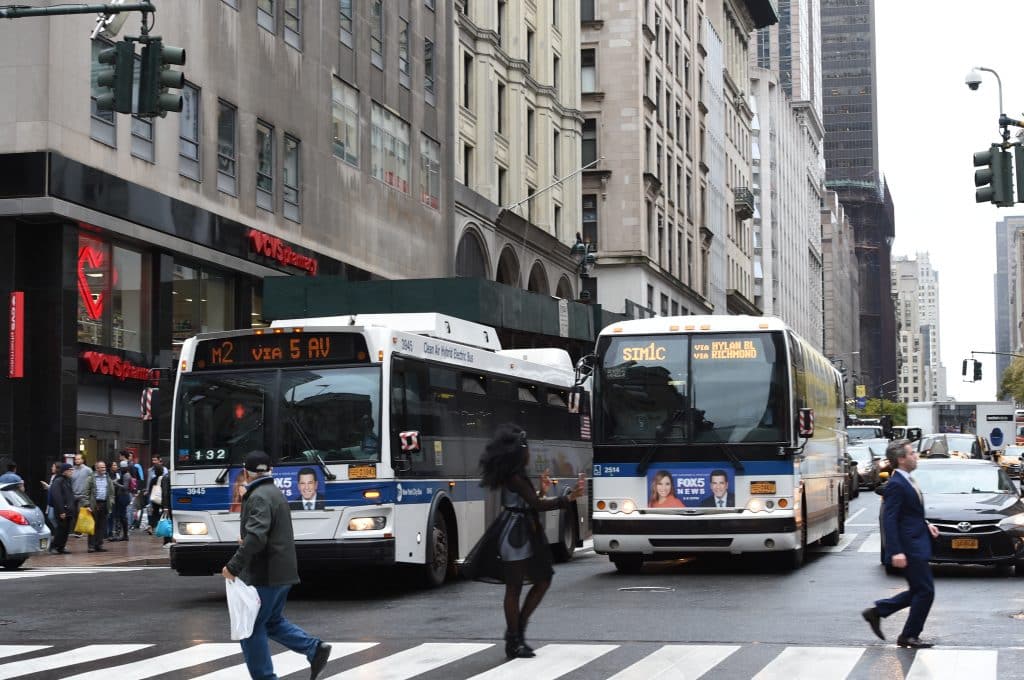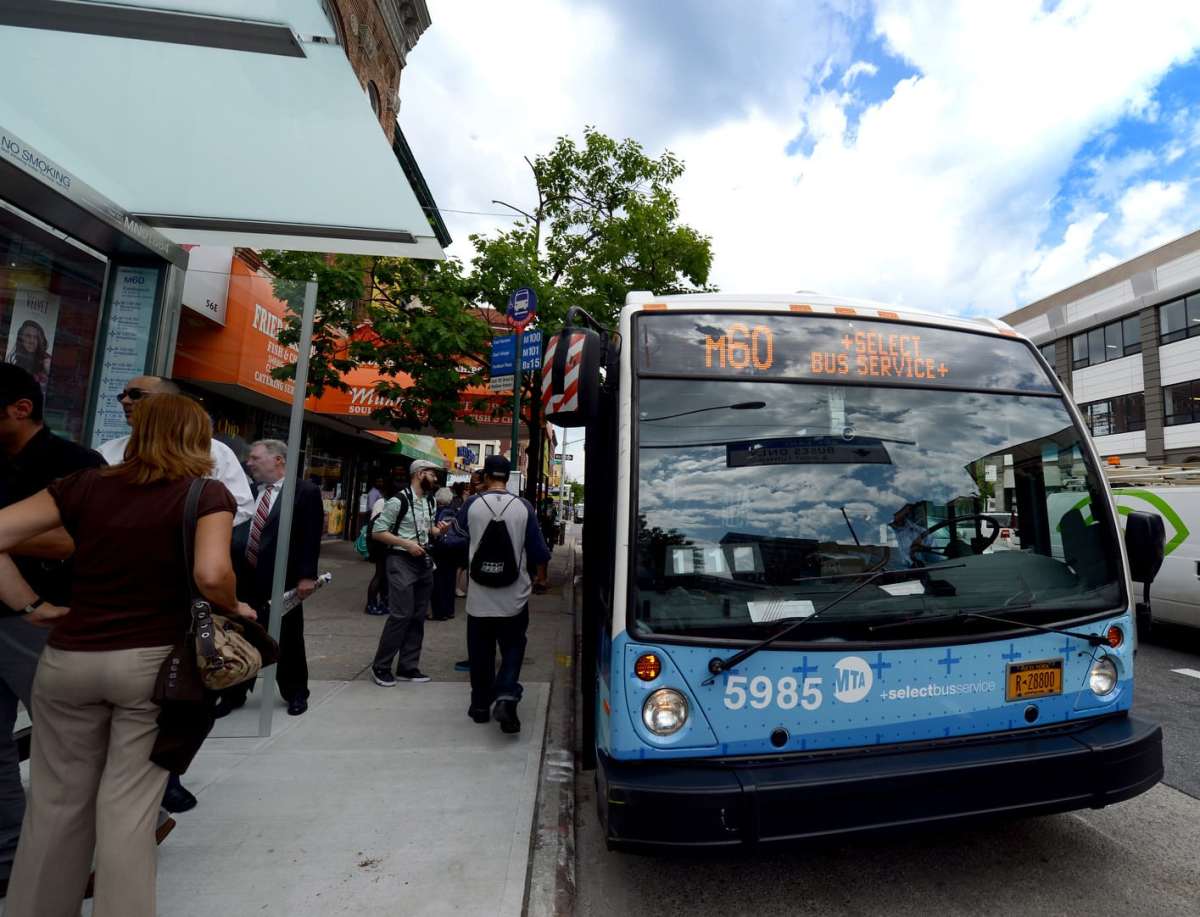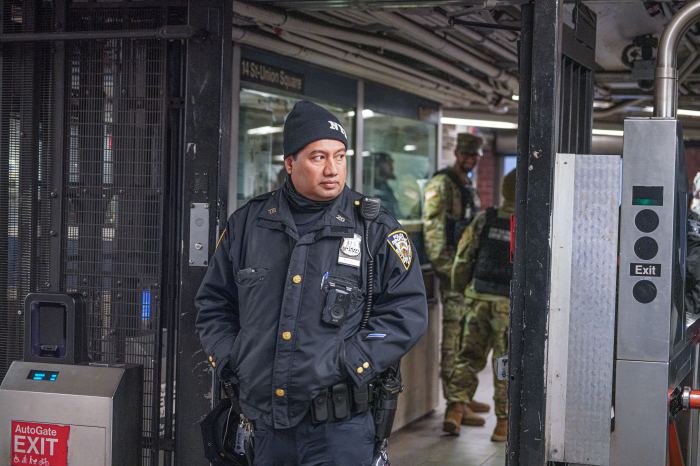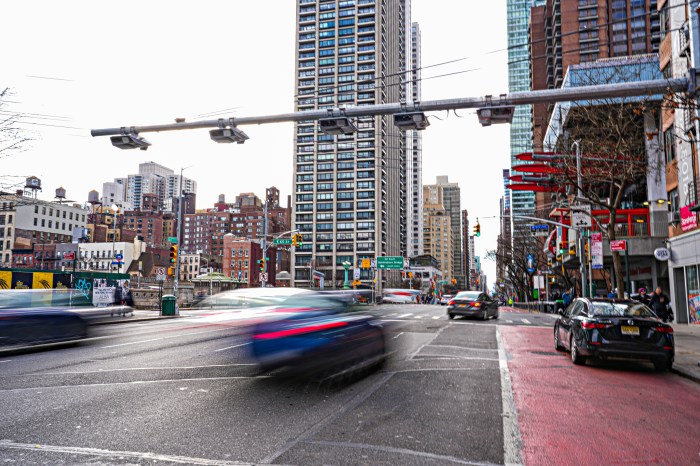The MTA is set to significantly expand camera enforcement against scofflaw drivers that slow down buses next year, the agency announced Wednesday, extending automated ticketing to those blocking bus stops and double parking on bus routes.
The transit agency currently has cameras automatically issuing $50 tickets to cars blocking bus lanes mounted on more than 600 buses across 21 routes. But starting in May of 2024, motorists blocking bus stops or double parking anywhere along a bus route will also face fines if a camera-equipped bus pulls up behind them.
In May, the MTA will activate expanded camera enforcement on 500 buses across 14 routes currently equipped with Automated Bus Lane Enforcement (ABLE) cameras. By the end of 2024, the agency says the technology will be deployed on 400 more buses, on 14 routes currently lacking camera enforcement.
After that, cameras are set to be added to another 1,000 buses across 30 routes through 2027.
‘ACE’ in the MTA hole

To reflect the expanded nature of the program, ABLE is being rebranded to ACE, or Automated Camera Enforcement. The additional purview was approved by lawmakers in this year’s state budget, and will run as a pilot program through 2028.
“This is quite a game changer for us,” said Sunil Nair, the head of the MTA’s zero-emissions fleet transformation, at the MTA’s Transit Committee meeting on Wednesday. “Making sure that our bus stops are clear is super important for us.”
Keeping the right-of-way clear for buses is critical to ensuring they can move faster than walking speed. New York’s buses are the slowest of any major American city, puttering along at an average of 8.18 mph this year, and bus speeds have been dropping since the start of the COVID-19 pandemic even as the MTA seeks to attract riders back to transit.
Paltry bus speeds are caused by a variety of factors, like closely-spaced bus stops and constant traffic congestion, but as Nair noted, delays for thousands of commuters can also be caused by individual scofflaw parkers.
“A single double-parked vehicle on our road has the potential, down the line, to slow down every traffic right behind and to increase congestion on our roads,” said Nair.
Tickets for faster rides
Bus speeds increase by an average of 5% when ABLE cameras are activated, while ticket recipients rarely are caught in bus lanes again: only 8% of drivers dinged for bus lane violations get more than two tickets, according to Frank Annicaro, the MTA’s senior vice president for buses.
Speeds also go up by about 10% when a route is equipped with a bus lane, Annicaro said, and get even faster when a dedicated busway, where only buses are allowed, is built. Bus speeds have improved by over 40% since busways were added on 181st Street in Manhattan and Archer Avenue in Queens.
Nonetheless, the pace of bus lane installation has been sclerotic under the Adams administration, which last year failed to meet a legal mandate to build 20 miles of new bus lanes. NYC Transit President Rich Davey wrote a letter to the city Department of Transportation this month expressing “disappointment” in the administration’s failure to build a busway on Fordham Road — which hosts the Bronx’s busiest route, the Bx12 — after local elected officials and businesses complained.
Read more: Oculus Opens Direct Access to E Train




































